Galilee
The Galilee (‘ha Galil’ in Hebrew and ‘al Jalil’ in Arabic) is an area of Israel located in the north of the country (as well as a part of southern Lebanon). It encompasses all of the land north of the ridge that stretches from Mount Carmel to Mount Gilboa and south of the east-west part of the Litani river.
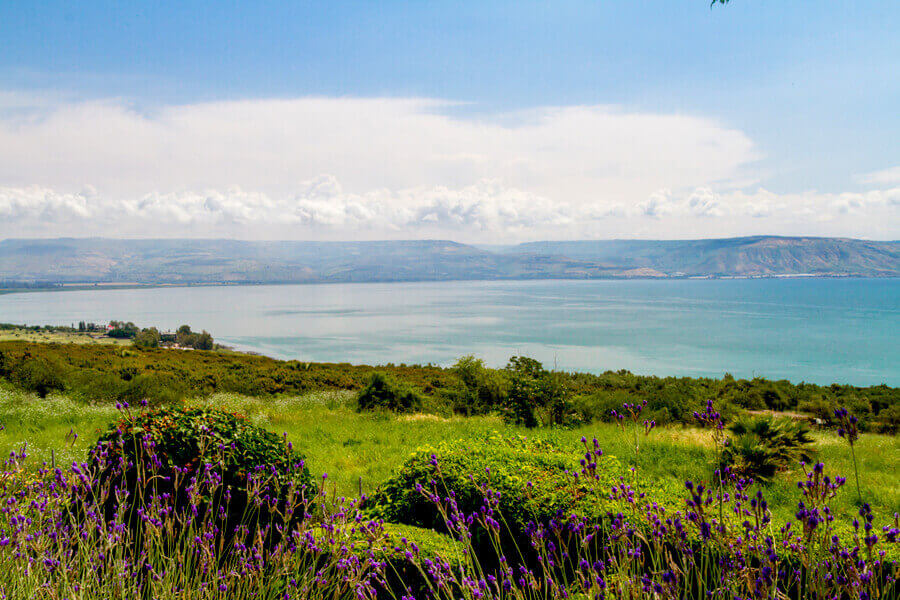
The Sea of Galilee. Photo credit: © Shutterstock
The Galilee stretches from Acre on the Mediterranean shores (the coastal plain of Israel area) all the way to the Jordan Valley and from the Litani (in the north, partly in Lebanon and also bordering on the Golan Heights) Locals often refer to specific parts of it as being in the ‘Upper Galilee’ and ‘Lower Galilee’.
‘Galilee of Nations’
‘Galil’ in Hebrew is a unique word meaning ‘district’ and in some biblical texts it is referred to as ‘ha Galil ha goyim’ which means ‘the Galilee of nations’. ‘Goyim’ can also mean ‘gentile’ in Hebrew so this is clearly a reference to ancient times when many non-Jews lived in this region.
Today, the area’s population is quite diverse. The majority of the population is Muslim, and most of these are Arab, although there are sizeable Christian Arab and Druze communities. Bedouins and Maronites also live in Galilee and, of course, there are Jewish communities too (often found on kibbutzim and ‘moshavim’).
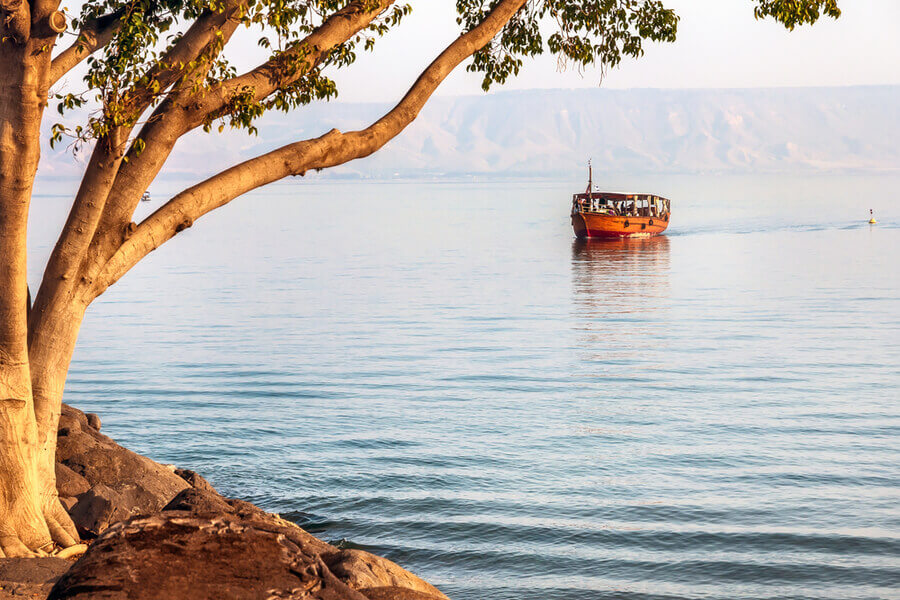
A Boat at the Sea of Galilee, Israel. Photo credit: © Shutterstock
Geography of Galilee
The Galilee is set in beautiful hills and much of it is lush and green. Its climate is very warm for much of the year and because its soil is so fertile it is the perfect place to grow fruits and vegetables. Historically, the area was prosperous - in Jesus’ times - barley, figs, grapes, wheat and olive oil were produced in large amounts. All of these are still produced today but advanced agricultural techniques mean you are likely to see many greenhouses filled with subtropical fruit, as well as orchards filled with citrus fruit, as you drive around the area.
Nevertheless, The Upper Galilee can have cool nights and even the occasional snowfall in winter, and both parts receive ample amounts of rainfall in the winter so, as mentioned before, the area is rich in agricultural land. Still, summers can be very hot, sometimes even sweltering and humid too.
In general, the best months of the year to visit are March to May and October to December, although for much of the year temperatures can be pleasant. The Sea of Galilee itself is 21 km long and almost 13 km wide. At almost 43 km deep, it is 209 metres below sea level which means it is the lowest freshwater lake on earth and the second-lowest lake in the world after the Dead Sea.
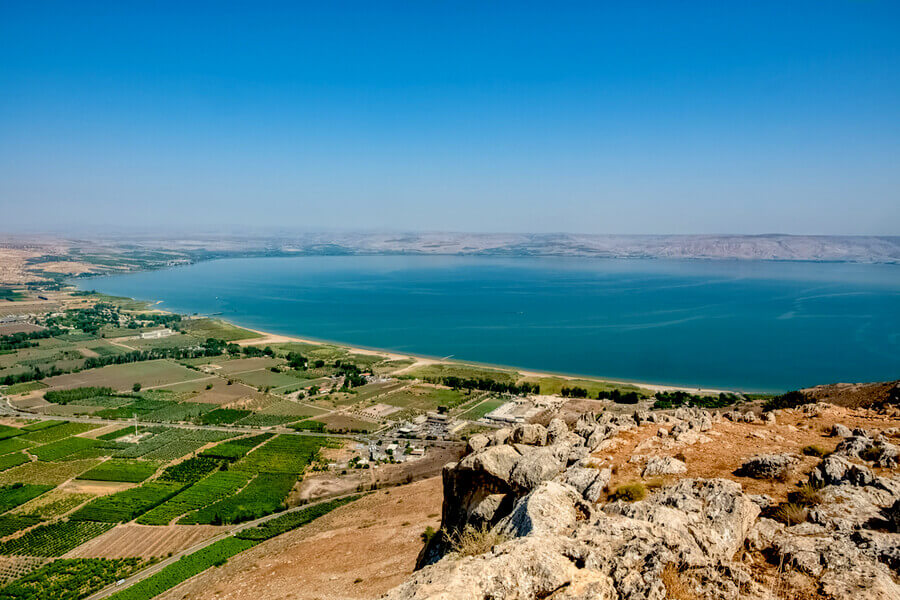
The view of the Sea of Galilee. Photo credit: © Shutterstock
History of the Galilee - Israelites, Crusaders and Muslim Rule
Historically, the region was ruled by the Israelites, under the auspices of the tribe of Naphtali. Throughout the times of Jesus, the Galilee was actually run by one of King Herod’s sons, as more of a ‘client state’. Jesus spent most of his adult life in this area so, unsurprisingly, many Galilee Christian sites eventually sprang up. The Hasmoneans conquered the area at the beginning of 2 BCE. Muslims conquered the area in 630 CE.
By the 10th century, the Shia Fatimids had taken control, which is how the Druze came to live in the north of the region. During the Crusades, it was an important region, one of the four major ‘seigneuries’ of the Kingdom of Jerusalem.
Ottoman Rule, the British Mandate and the War of Independence
During the Ottoman period, Galilee was ruled by the Safad Sanjak - during their rule, many Jews, having been expelled from Spain, moved to this region, mainly to Safed, making it a centre for learning (in particular the esoteric school of Kabbalah).
Under the British Mandate, there was a rise in nationalist politics in both the Arab and Jewish camps. After the War of Independence in 1948, the area was divided between Israel and what was then Transjordan. Today, its most prominent cities are Nazareth, Safed, Karmiel, and Afula and Haifa serves as its main hub (as a port city).
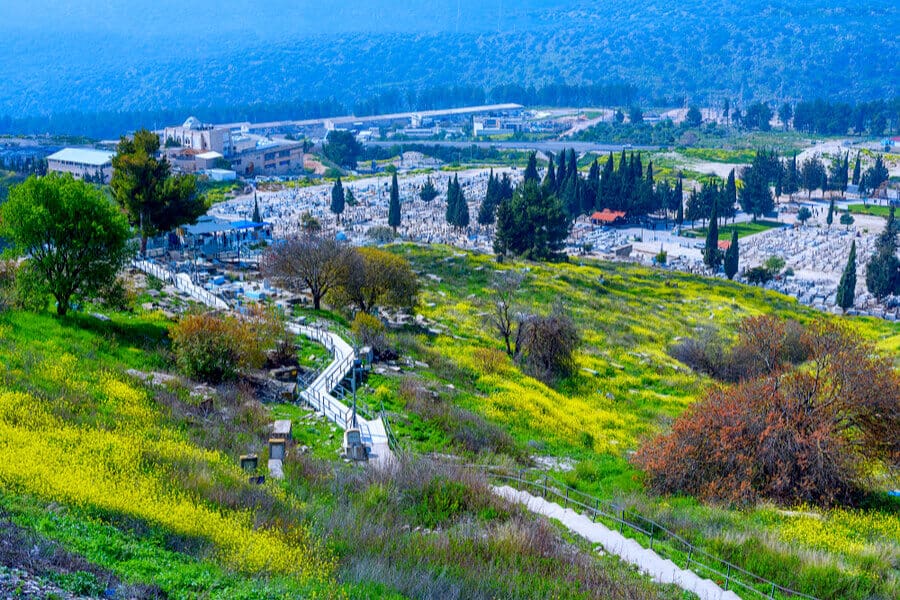
The city of Safed in the Upper Galilee. Photo credit: © Shutterstock
National Parks in Galilee
Tel Hazor - this ancient site contains some very impressive ruins including Solomon’s gate, a Canaanite palace and a water system that dates back to the time of King Ahab and supplied local residents with water, even in times of drought.
Hula Nature Reserve - a major wet habitat in the Middle East and a fantastic site to see water birds, many of whom spend winter in this region. This national park contains an observation tower, a floating bridge, water buffalo and fallow deer. Walk around the marshes and spy animals hiding and look out for the large grove of eucalyptus trees.
Tsipori National Park - this large complex has the remains of sn Roman theatre, a Crusader castle, a Jewish residential quarter, a synagogue and even a Roman villa. Look out for the impressive ancient reservoir which runs for 260 metres underground.
Hamat Tiberias - here you can see beautifully preserved mosaics in an ancient synagogue, as well as the remains of a Turkish hammam (bathhouse) dating back to the 18th century. There are also mineral pools you can take a dip in!
Korazim - this town, mentioned in the Babylonian Talmud, contains remains that date back from the 3rd and 4th centuries. The beautiful synagogue here was built at the end of the 4th century and was made of basalt, a common stone in Galilee. The beautiful synagogue at Korazim, built at the end of the fourth century or the beginning of the fifth century CE, is made of basalt, the region’s most common stone. The building has an elaborate facade, with geometric patterns carved in the stone.

Hamat Tiberias National Park. Photo credit: © Shutterstock
Archaeological Sites in Galilee
Megiddo - this ancient city (known, famously, in Greek as Armageddon) was one of the most important cities in Canaan and today it is possible to explore its remains, including underground tunnels and a water system.Capernaum - this is the remains of a fishing village of Kfar Nahum from the time of the Second Temple and today houses the remains of an ancient synagogue including stone friezes.
Tomb of Rabbi Meir Baal HaNes - this ancient sage whose name is translated from Hebrew as the Miracle Maker, lived at the time of the Mishna ( Oral Torah, 139-163 CE). His tomb is located in Tiberias.
Kursi National Park - encompasses the impressive remains of a Byzantine monastery and church. Christians believe it is the site of the Miracle of the Swine mentioned in the Bible.
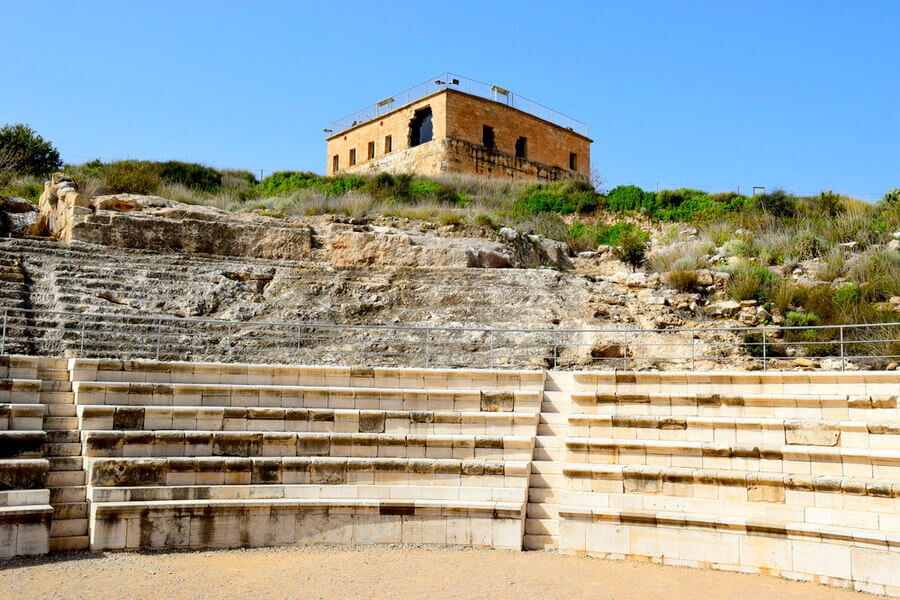
Tsipori Archaeological site. Photo credit: © Shutterstock
Museums in Galilee
Yigal Allon Museum - located at Kibbutz Ginosar here you can find exhibits relating to the history, nature, and culture of the Galilee, as well as artworks made by local Arabs and Jews.
Janco Dada Museum - established in 1983 in the lovely village of Ein Hod, this small museum is dedicated to Marcel Janco, who brought the Dada movement to Israel.
Wilfred Israel Museum - located on Kibbutz Hazorea, near Megiddo, this tiny museum is dedicated to the art of the Far East - here you can see sculptures, paintings and artwork.
Upper Galilee Museum of Prehistory - a small site, filled with prehistoric artefacts collected from the Hula Valley, situated in Kibbutz Ma'ayan Baruch.
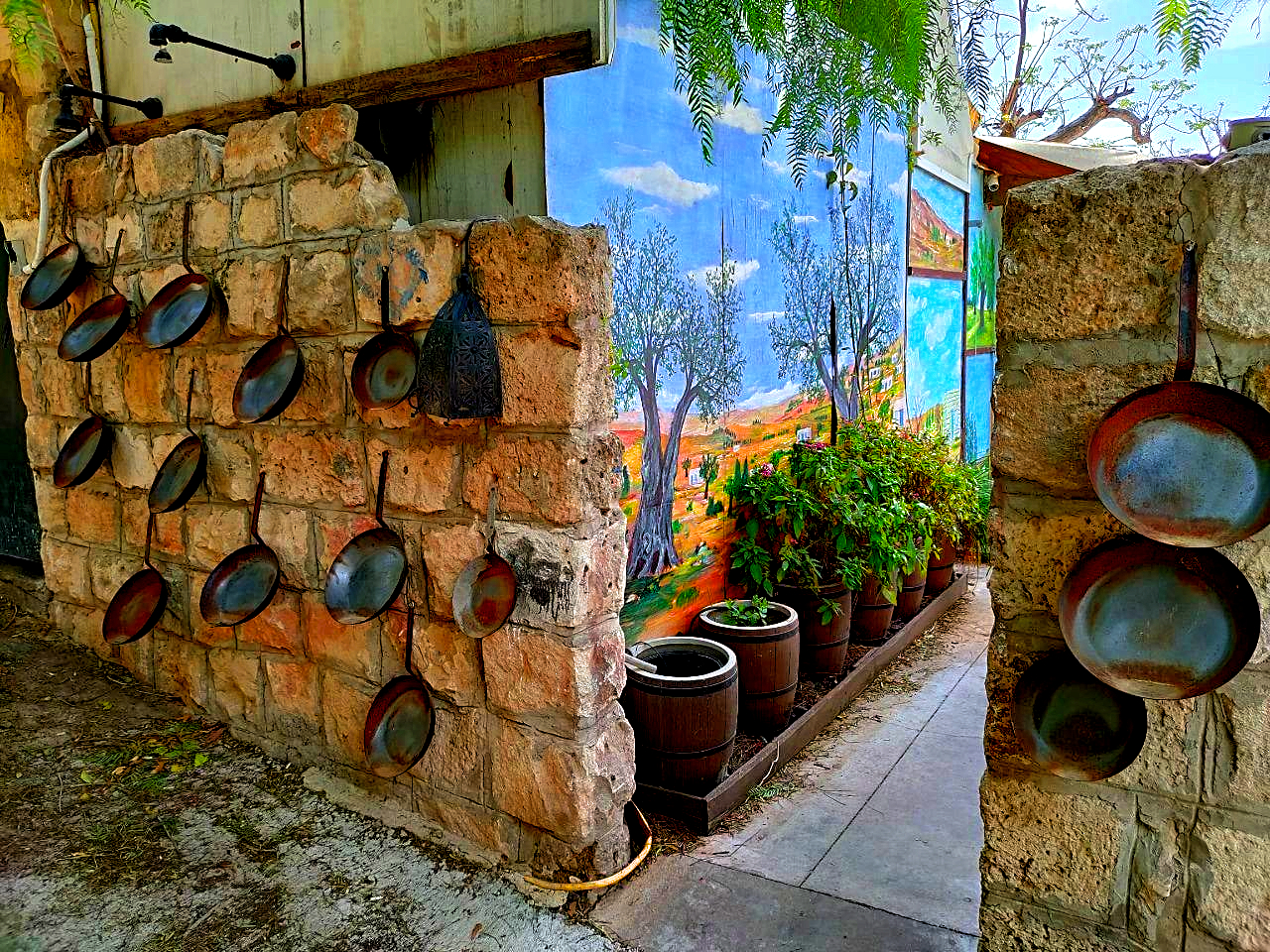
The Artists Village of Ein Hod. Photo credit: © Dmitry Mishin
Jewish Holy Sites in Galilee
There are several sites that have a long Jewish history in Galilee. Perhaps the most important is Safed, a town that has been a centre for Jewish mysticism for hundreds of years. Its tiny winding streets are picturesque and it also boasts a beautiful Artists' Colony. Here we can see synagogues that operated until the 6th century AD throughout Galilee.
There are a plethora of Jewish holy sites like Beit Shearim, the Tomb of the Prophet Habakkuk, tombs of the most influential Rabbis, like Rabbi Shimon Bar Yochai, Rabbi Akiva, or the Tomb of Maimonides (Rabbi Moshe Ben Maimon) and Tomb of the Matriarchs in Tiberias.
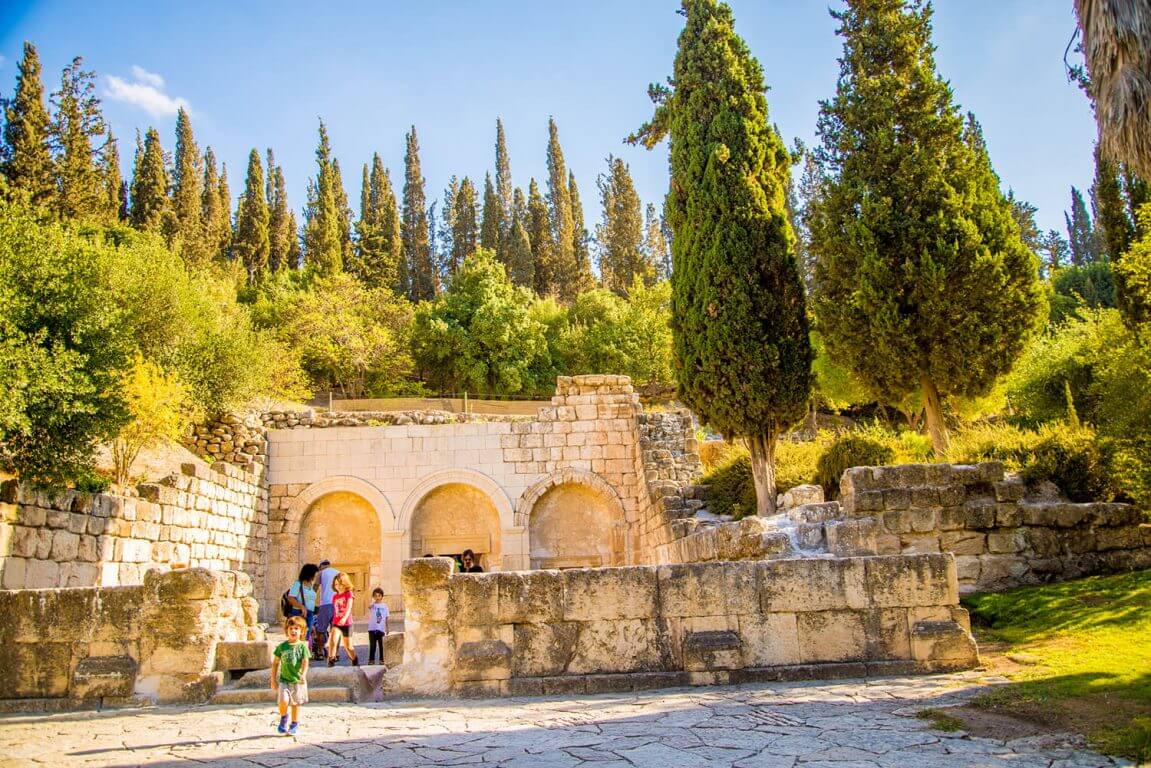
Beit Shearim National Park. Photo credit: © Shutterstock
Christian Holy Sites in Galilee
The Galilee is full of fascinating religious sites, mentioned both in the Hebrew and Christian Bibles, which are really worth a visit. Jesus ministered primarily in Galilee and many of his miracles were carried out in this region. This is where he changed water into wine, transformed two fishes and five loaves into food to feed 5,000 and walked on water. Today, the Galilee is a popular pilgrimage site for tens of thousands of Christians who, each year, arrive at the famous baptismal site Yardenit with Chrisitan tour packages.
There are many churches to visit around the area too including the Church of the Beatitudes, designed by renowned Italian architect Antonio Barluzzi (where Jesus gave his famous Sermon on the Mount), Church of the Multiplication in Tabgha (where Jesus created food to feed thousands), the Wedding Church of Cana (where Jesus turned water into wine at the wedding of a poor local couple) and the Church of the Primacy of St. Peter in Capernaum (where Peter once lived).
Furthermore, In 2011, the ‘Jesus Trail’ was established, giving pilgrims the opportunity to walk in the footsteps of Jesus, along with a 60 km (40 miles) network of footpaths, bicycle lanes and roads. Pilgrims begin in Nazareth and hike the journey all the way to the Sea of Galilee, where the trail ends at Capernaum. It is possible to camp along the way, as well as spend the night in local kibbutz accommodation or private ‘zimmers’ (bed & breakfasts).
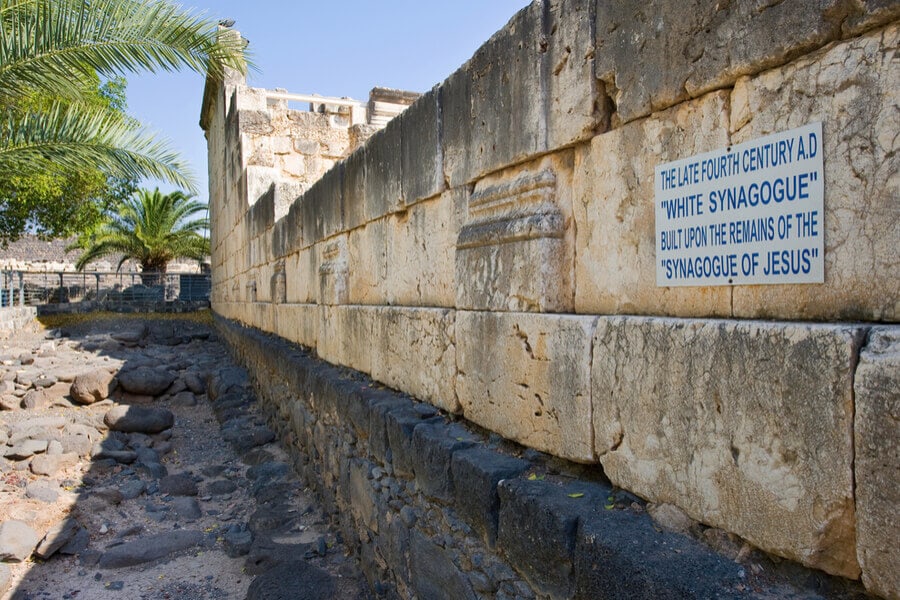
Ruins of the Synagogue of Jesus in Capernaum, Israel. Photo credit: © Shutterstock
Around Galilee
Nazareth - home to Joseph and Mary, the parents of Jesus, the ancient city of Nazareth is where Jesus spent some of his earliest years. It is well worth a visit, not just to see the Church of the Annunciation (where the Angel Gabriel visited Mary) and the Church of St. Joseph, but also for its shuk (market). Join one of numerous Nazareth tours to discover this biblical city.
The Sea of Galilee - a beautiful place to drive around, and dotted with sites along the route, there are all kinds of places to tour here including visits to Magdala, Kibbutz Ein Gev, and a number of historic churches.
Camping - there are a number of camping sites in the area, which are ideal for overnight stays - they are relatively inexpensive, with excellent facilities, and afford beautiful morning and evening views over the lake.

Camping tents. Photo by I Do Nothing But Love on Unsplash
Galilee Attractions and Cuisine
The area is full of attractions, including Mount Tabor, Mount Meron, and the beautiful Rosh Hanikra (on the Lebanon border). It is a wonderful place for outdoor lovers, since it is full of hiking trails, and sports lovers can enjoy horse riding and kayaking in the Jordan River.
For wine lovers, there are a number of excellent wineries in the region, where you can attend tastings and buy wine, as well as other local produce, such as cheese, olive oil, and chocolate. Cuisine in the region is light and fresh. In the spring, almonds flourish, as do mulberries.
Local cheeses are always very popular with tourists, as is the organic produce - try the avocados, sweet peppers, nectarines and dates. In recent years, the concept of ‘foraging’ (searching for wild produce that is then incorporated into dishes) has become popular.

Harvest moments in the vineyard. Photo by Árpád Czapp on Unsplash
Getting to Galilee
There are three ways to travel to, and around, Galilee - public transport, car rental, and group excursions as well as Galilee private tours.
Getting to Galilee by bus - you can travel directly to Tiberias from Tel Aviv, Haifa, or Jerusalem but then things become more difficult - buses in the area do not run regularly and you waste precious time waiting for connections. Some young people do hitch rides in the area.
Getting to Galilee by car - renting a car in Israel is not difficult and this will give you flexibility in your itinerary. However, bear in mind a couple of things - firstly, you may find driving in Israel challenging (it is fast-paced and not for the faint-hearted) and secondly, you will have to deal with parking problems (which can really give you a headache in certain areas).
Getting to Galilee by tour - the third, and definitely, the easiest option is to book a tour of the Galilee - either in a group or privately. Whether you have one day or several, there are all kinds of options - those that focus on archaeological sites in Northern Israel and historical landmarks in Galilee, those that concentrate on religious/pilgrim aspects, and those that give you a ‘mix’ - a little history, a little nature, and a little theology. Of course, if you decide to take a private Galilee tour, it can be tailored to your specific needs - you set the agenda. However you travel, though, enjoy Galilee!

Tel Hazor National Park. Photo credit: © Doron Nissim. Published with permission of the Israel Nature and Parks Authority
 Login / Register
Login / Register
 Contact Us
Contact Us
 Certificate of Excellence
Certificate of Excellence Guaranteed Departure
Guaranteed Departure Low Prices Guaranteed
Low Prices Guaranteed 24/7 Support
24/7 Support




